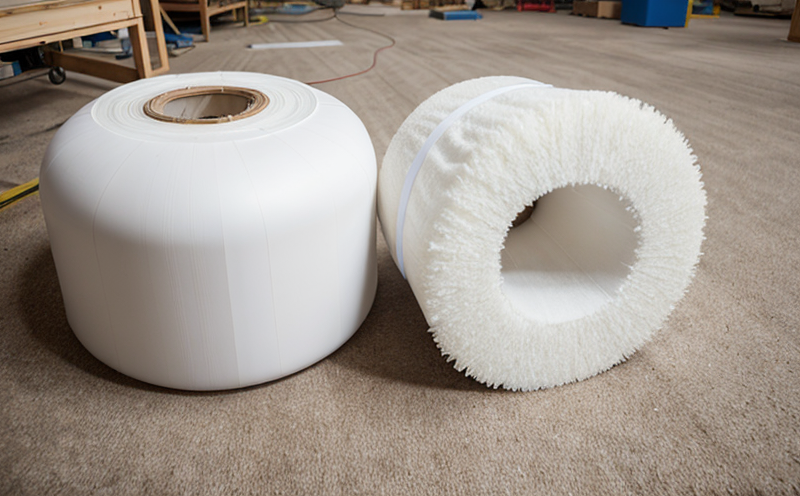ASTM E1425 Sound Transmission Testing of Doors
The ASTM E1425 standard is a crucial method used to evaluate the sound insulation properties of doors. This service ensures that door assemblies meet specific acoustic performance criteria, which are essential for creating quiet and comfortable indoor spaces in various sectors such as residential, commercial, and industrial buildings.
Sound transmission testing measures how well a door system reduces noise from one room or space to another. Doors play a significant role in sound control within architectural designs because they can be a primary source of sound leakage if not properly designed and installed. ASTM E1425 provides detailed procedures for determining the sound insulation properties of doors, which helps architects, builders, and manufacturers ensure that their products meet regulatory requirements and perform effectively.
The test involves measuring the amount of sound energy transmitted through a door assembly from one room to another under controlled conditions. The result is expressed as an "STC" (Sound Transmission Class) rating, which indicates the level of noise reduction provided by the door system. Higher STC ratings mean better sound insulation performance.
When selecting doors for new constructions or renovations, specifying ASTM E1425-compliant products ensures that the building meets noise control standards and provides a more pleasant living or working environment. This service is particularly important in healthcare facilities, schools, offices, and residential buildings where maintaining privacy and comfort is paramount.
For quality assurance purposes, laboratories adhering to ASTM E1425 must have certified equipment and trained personnel capable of conducting accurate tests according to the specified procedures. The testing process typically includes setting up the door assembly between two sound chambers, applying background noise levels, and measuring the transmitted sound energy over a range of frequencies.
| Sector | Application |
|---|---|
| Healthcare Facilities | Maintaining patient privacy and reducing noise pollution. |
| Schools & Universities | Creating quieter environments for learning and study. |
| Offices & Commercial Spaces | Promoting a more comfortable work environment. |
| Residential Buildings | Improving living conditions and reducing noise interference. |
The ASTM E1425 sound transmission testing process is critical for ensuring that doors meet the necessary performance standards. By adhering to this standard, laboratories can provide accurate and reliable test results, helping clients make informed decisions about their door selections.
- Ensures compliance with international noise control regulations.
- Improves indoor acoustics for better living and working conditions.
- Aids in the design of quieter environments that enhance occupant satisfaction.
- Facilitates the selection of appropriate door solutions based on specific acoustic performance requirements.
Industry Applications
The ASTM E1425 sound transmission testing service is widely used across various industries to ensure that doors meet strict noise control standards. This section highlights some key applications in different sectors:
- Healthcare Facilities: Ensuring patient privacy and reducing noise pollution.
- Schools & Universities: Creating quieter environments for learning and study.
- Offices & Commercial Spaces: Promoting a more comfortable work environment.
- Residential Buildings: Improving living conditions and reducing noise interference.
Quality and Reliability Assurance
The ASTM E1425 sound transmission testing service plays a vital role in quality assurance by providing accurate measurements of door performance. This ensures that doors meet specified noise reduction standards, enhancing the overall acoustic environment within buildings.
- Ensures compliance with international noise control regulations.
- Improves indoor acoustics for better living and working conditions.
- Aids in the design of quieter environments that enhance occupant satisfaction.
- Facilitates the selection of appropriate door solutions based on specific acoustic performance requirements.
Environmental and Sustainability Contributions
The ASTM E1425 sound transmission testing service contributes to environmental sustainability by promoting quieter, more energy-efficient building designs. By reducing noise pollution, this service helps create healthier living and working spaces that contribute positively to the environment.





